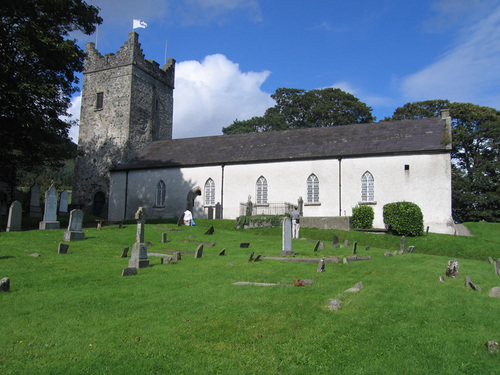-
Carlingford, Free Article
Hey everyone,
I chose to present you all the journey that I have already done.
The first one that I did is the Carlingford’s visit.
Carlingford is a coastal fortified townland in northern country of Ireland (Louth). It is situated. The city is approximately located about thirty kilometers north east (by road) from Dundalk (16 km directly), 90 km north of Dublin and 11 km south of the border with Northern Ireland. There was 1.045 inhabitants in Carlingford in 2011
I have already visited this city. The first time was with my father, the day after I arrived in Dundalk (yes, my father is nice, he came with me in order to help me in my installation). The second time was with the DKIT for the Erasmus Day.
I extremely enjoy this lovely city because it is as a village border by the sea. There is also some wonderful mountains (it is available to do walking) and castle ruins.
The main places of interest are (source wikipedia):
· “King John's Castle. Despite the western part being commissioned by Hugh de Lacy before 1186, the castle owes its name to King John (Richard the Lionheart's brother) who visited Carlingford in 1210. The eastern part was constructed in the mid-13th century with alterations and additions occurring in the 15th and 16th centuries. In the 1950s the Office of Public Works (OPW) undertook conservation work to stabilize the structure. An excellent view of the north pier and lough can be had from the viewing area on the eastern side of the castle, though the castle itself is closed to the general public for health and safety reasons”.
The King John Castle
· “Taaffe's Castle. A fortified town house that belonged to the rich mercantile Taaffe family who became Earls of Carlingford in 1661. Its close proximity to the harbour would suggest a trading depot on the ground floor with the upper floors reserved for residence. The construction suggests two phases—the main tower built in the early 16th century while the extension to the side occurred later”.
The Taaffee Castle
· The Tholsel. The Tholsel or "town-gate" is the only remaining example of its nature in Carlingford and one of the few left in Ireland. Originally it was three stories high—the present appearance due to alteration made in the 19th century. The original function was to levy taxes on goods entering the town—the murder-holes on the side of the walls are testaments to that fact. In 1834 it was used by the Corporation of Carlingford for meeting and a Parliament is said to have used it to make laws for The Pale. It was also used as a town gaol in the 18th century.
The Tholsel
· The Mint. A fortified three-storey town house belonging to a wealthy merchant family in the centre of Carlingford. While the right to mint coinage was not granted to Carlingford until 1467, it is unlikely that it was actually used as a mint. The most interesting feature is the five highly decorated limestone windows. The patterns and motifs are an example of the influence of the Celtic Renaissance on art during the 16th century.
· Dominican Friary. The Dominicans were established in Carlingford in 1305 primarily because of their patron Richard Óg de Burgh, 2nd Earl of Ulster, with the friary itself being dedicated to St. Malachy. Dissolved in 1540 by Henry VIII, it became the centre of a repossession struggle between the Dominicans and Franciscans in the 1670s. It was resolved in favour of the Dominicans by Oliver Plunkett. However the friary itself was subsequently abandoned in the 18th century by the Dominicans to their present location of Dundalk. The remains today consist of a nave and chancel divided by a tower. Also, there are possible remains of some domestic buildings to the south like a mill race and mill pond.
· Church of the Holy Trinity. Donated by the Church of Ireland to Carlingford this restored medieval church is also known as the Holy Trinity Heritage Centre. Exhibits inside display the history of Carlingford from Viking times to the present period. The video and beautiful stained glass window are popular with visitors. Musical recitals are common. The grounds outside contain a graveyard.
The Church Of the Holy Trinity
· Market Square. Now the main street of Carlingford, this was the area where a weekly market was held with records of its layout going back to 1358. It is now the intersection of Dundalk Street and the beginning of River Lane.
This is the place where the market took place before
I hope you enjoy this article on my trip.
Hope to see you soon,
Regards,
Victor ^o^
Source : http://en.wikipedia.org/wiki/Carlingford,_County_Louth
Carlingford Tourist Information
Le Petit Futé Irlande, Dominique Auzias, Jean-Paul Labourdette, 2011
http://www.geograph.ie/
-
Commentaires






